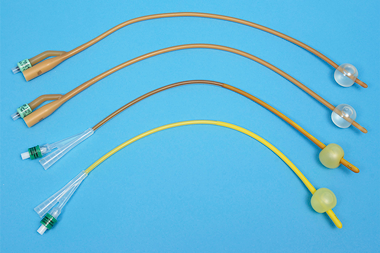
Incontinence Catheters: A Lifeline for Managing Urinary Incontinence
Share

Incontinence catheters play a vital role in managing urinary incontinence for individuals who have difficulty controlling their bladder or emptying it completely. These medical devices provide a reliable solution for improving quality of life and maintaining hygiene, offering comfort and dignity to those who need them.
What Are Incontinence Catheters?
Incontinence catheters are thin, flexible tubes inserted into the bladder to drain urine. They are commonly used in cases of urinary incontinence, retention, or other medical conditions affecting bladder function. Catheters come in different types, including intermittent, indwelling (Foley), and external (condom) catheters, tailored to meet individual needs.
How Do Incontinence Catheters Work?

-
Insertion:
-
Indwelling Catheters: Inserted through the urethra or a small incision in the abdomen and left in place for continuous drainage.
-
Intermittent Catheters: Inserted as needed to empty the bladder and then removed.
-
External Catheters: Non-invasive devices fitted over the penis to collect urine.
-
-
Urine Collection:
-
The catheter channels urine from the bladder into a collection bag, which can be emptied as needed.
-
-
Maintenance:
-
Regular cleaning and proper care of the catheter and collection system are essential to prevent infections and ensure optimal performance.
-
Benefits of Incontinence Catheters
-
Improved Quality of Life: Enables individuals to manage incontinence effectively and maintain daily activities with confidence.
-
Enhanced Hygiene: Reduces the risk of skin irritation and infections by keeping the bladder empty and the skin dry.
-
Convenience: Provides a reliable solution for individuals with mobility issues or conditions like spinal cord injuries.
-
Customizable Options: Different types of catheters are available to suit various needs and preferences.
-
Prevents Complications: Helps avoid issues like bladder overdistension and kidney damage caused by urine retention.
Who Can Benefit from Incontinence Catheters?

-
Individuals with urinary incontinence or retention.
-
Patients recovering from surgery or medical conditions affecting bladder control.
-
Those with mobility challenges or neurological conditions like multiple sclerosis or spinal cord injuries.
Tips for Using Incontinence Catheters Safely
-
Hygiene: Always wash your hands before and after handling a catheter.
-
Proper Cleaning: Follow the manufacturer’s instructions for cleaning and maintaining the catheter.
-
Hydration: Drink plenty of fluids to help flush the bladder and prevent infections.
-
Regular Changes: Replace or clean the catheter as recommended by your healthcare provider.
-
Monitor for Issues: Watch for signs of infection, such as redness, pain, or fever, and consult a healthcare professional if they occur.
Why Choose Incontinence Catheters?
Incontinence catheters are a reliable and practical solution for individuals struggling with bladder control issues. By providing a safe and effective way to manage incontinence, these devices empower users to lead more comfortable and independent lives.
